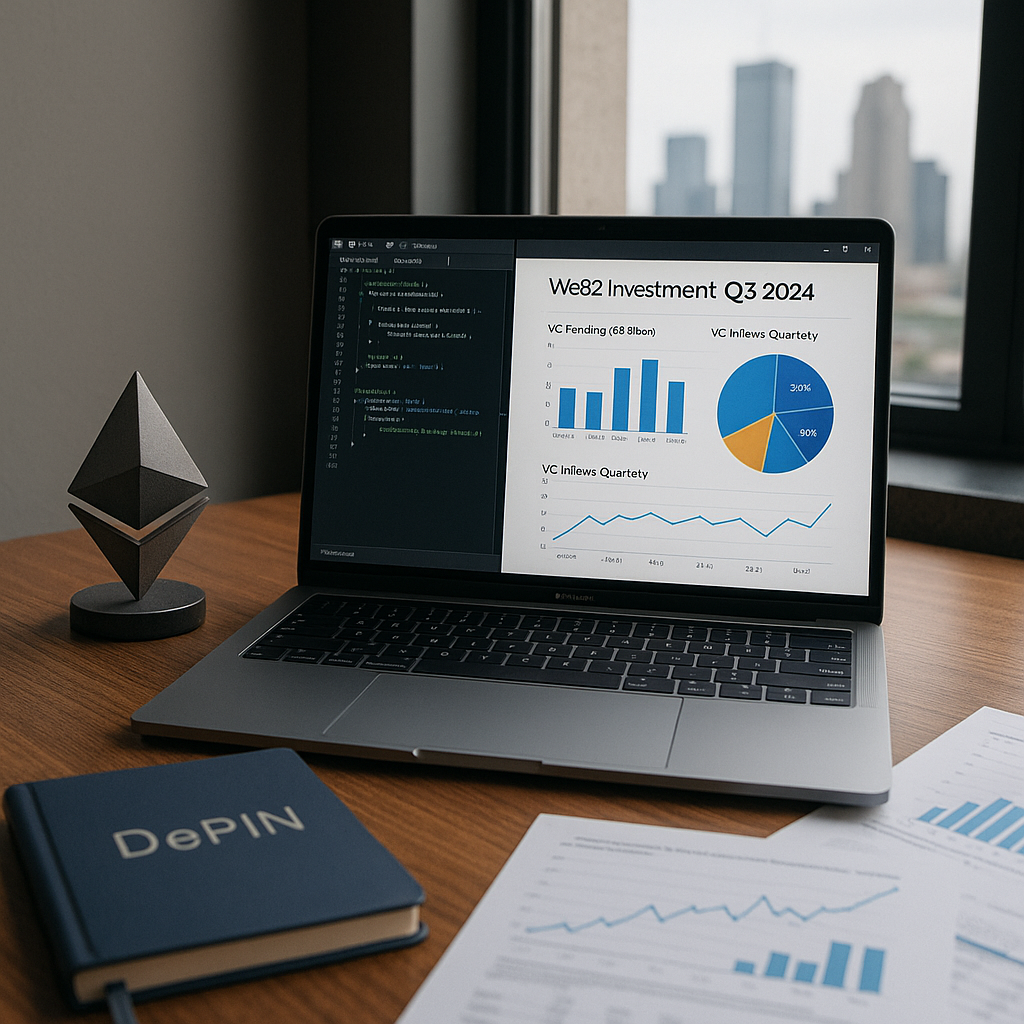Web3 Projects See Resurgence in Funding
After a prolonged crypto winter, Web3 startups are once again attracting investor capital in 2024. In Q2 and early Q3, venture funding for Web3 projects — covering everything from decentralized finance (DeFi) to decentralized physical infrastructure (DePIN) and blockchain gaming — has seen its strongest rebound since early 2022.
Analysts attribute this resurgence to a combination of regulatory clarity, maturing infrastructure, and improved user onboarding. Institutional players and venture capital firms are returning with cautious optimism, marking a new cycle of innovation in the decentralized internet.
VC Funding Rebounds After Two Years of Decline
According to data from PitchBook and Messari:
-
Web3 startups raised $3.9 billion globally in Q2 2024, up 76% year-over-year
-
Infrastructure and developer tooling made up 42% of total deal volume
-
Early-stage rounds dominated, but several large Series B and C rounds returned
Notably, Andreessen Horowitz (a16z crypto), Paradigm, and HashKey Capital were among the most active backers this quarter. Seed rounds are back in favor, particularly for teams building modular blockchains, cross-chain protocols, and zk-based privacy solutions.
What’s Driving the Renewed Interest?
1. Regulatory Clarity
The MiCA framework in Europe and SEC softening in the U.S. have offered clearer boundaries for compliant crypto projects. This legal certainty has encouraged capital deployment into Web3 segments deemed infrastructure rather than financial instruments.
2. Infrastructure Maturity
Ethereum Layer 2 solutions (like Base, Arbitrum, and Scroll) are now robust enough to support scalable dApps. Simultaneously, projects like Celestia and EigenLayer are enabling modular data availability and restaking ecosystems.
This has created the conditions for builders to focus on real user problems, rather than protocol speculation.
3. Renewed Use Cases
-
Decentralized AI: Projects blending Web3 with AI compute marketplaces are attracting investor attention
-
DePIN (Decentralized Physical Infrastructure): Networks like Helium, Render, and Peaq are pioneering machine-to-machine payments and decentralized IoT
-
Onchain Gaming: Games with open economies and asset interoperability are gaining traction with mainstream gamers
Key Funding Highlights in 2024
-
Peaq raised $30 million in a Series B round for DePIN infrastructure across Europe
-
Zora secured $25 million to scale creator tools and NFT marketplace protocol
-
Ritual (AI compute network) completed a $20 million seed round led by Archetype
-
LayerZero continued global expansion with a $120 million Series C, focused on cross-chain interoperability
In contrast to 2021’s hype-driven valuations, current rounds emphasize longer vesting schedules, leaner teams, and utility-first models.
What Sectors Are Attracting the Most Capital?
| Sector | Share of Web3 VC Funding (Q2–Q3 2024) |
|---|---|
| Infrastructure & Tooling | 42% |
| DeFi 2.0 & Real-World Assets | 18% |
| Gaming & Metaverse | 16% |
| DePIN & IoT | 12% |
| Social & Creator Economy | 7% |
| Privacy & ZK Tech | 5% |
VCs are showing a preference for composability, open-source development, and clear revenue paths, a departure from the token-first models of previous cycles.
Institutional Players Testing the Waters
In 2024, traditional institutions are also cautiously entering Web3:
-
Fidelity and Franklin Templeton have launched tokenized fund pilots on Polygon and Ethereum
-
Goldman Sachs is exploring tokenized asset clearing with Avalanche subnet architecture
-
Visa continues R&D on stablecoin settlement layers and Layer 2 integration
These moves signal growing interest in infrastructure rails and interoperability, rather than purely speculative DeFi applications.
How This Cycle Differs from 2021
| Metric | 2021 Cycle | 2024 Resurgence |
|---|---|---|
| Focus | Tokens, DAOs, NFTs | Infrastructure, DePIN, AI |
| Team Size | Large, often bloated | Lean, technical |
| Valuation Strategy | Aggressive, hype-based | Revenue-based, milestone-driven |
| Regulation | Unclear, adversarial | Defined in major markets |
| Onboarding UX | Complicated | Walletless & embedded UX |
This cycle appears more disciplined, with teams prioritizing user experience, on-chain reputation systems, and compliance by design.
Challenges That Remain
Despite the optimism, several challenges must still be addressed:
-
Token Liquidity: Many tokens from prior cycles remain illiquid or under water
-
User Retention: dApp retention is low without meaningful incentives
-
Security Concerns: Smart contract exploits and bridge vulnerabilities persist
-
Mobile Experience: The Web3 user experience on mobile remains clunky in many ecosystems
VCs are watching closely to see if real-world utility can convert into sustained adoption.
Strategic Outlook for Builders and Investors
-
Lean Protocols Win: Investors are favoring teams with runway-conscious strategies and clear technical milestones.
-
DePIN and Modular Chains: These are becoming cornerstone narratives of the next Web3 cycle.
-
Compliance and KYC Layers: New DeFi apps are integrating optional compliance modes to court institutional capital.
-
Onchain Reputation: Identity, credit, and social capital protocols are being built to power the next generation of dApps.
Builders are encouraged to prioritize UX, long-term value capture, and ecosystem interoperability.
Conclusion: Web3 Spring Is Blooming
After years of skepticism and declining capital, 2024 is proving to be a turning point for Web3 funding. With disciplined VCs, regulatory clarity, and scalable infrastructure, the conditions are ripe for a new wave of decentralized innovation.
While it may not resemble the explosive growth of 2021, this cycle is more measured, mature, and mission-driven — and that might be exactly what Web3 needs to thrive.
